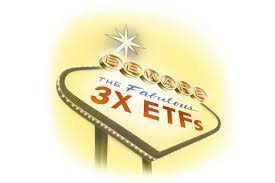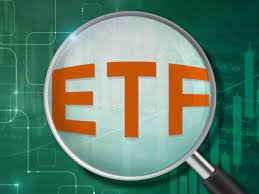As our example we’re just going to take the Direxion Daily S&P Biotech Bull 3X Shares (NYSEARCA: LABU) as our example. This isn’t the only leveraged ETF out there by a long way it’s just an example. There is the Bear version of the same Direxion ETF (NYSEARCA: LABD) for example, they near always come in pairs. Bull and Bear for those who wish to be able to trade either way. There are also such leveraged ETFs on all sorts of things, the S&P 500, Semiconductor stocks, if there’s enough interest then there’s both an ETF and then a leveraged ETF on it.

But, and here’s the thing, when would we want to trade the index itself, or the ETF that is tracking it, or the leveraged ETF based upon the index? There are usually 2x and 3x leveraged ETFs, both bull and bear.
One Simple Answer About Leveraged ETFs
There’s a simple answer to this which is that we want to use the ETF if we wish to buy and hold. Say we’re into riding the S&P 500 for our pension, holding for decades. That’s the ETF, no doubt about it. We might end up paying 3.5 basis points a year and that’s it, after that fee we’ll be tracking the index. Plus, we will get dividends – those being the secret about long term investing.
But why not a leveraged ETF? Sure, we know that owning options or futures are trading, not investing, but the leveraged ETF? The answer there is that a leveraged ETF is just a wrapper for someone else buying and selling the futures and options positions. So, we gain the same economic outcome without having to do the work – but it is that same economic outcome.
At which point one answer is that obviously we’ve got to pay the people balancing those futures and options. LABU has charges of 0.96% for example. As opposed to perhaps that 0.035% on a passive ETF as above. Over decades that really cranks up as a difference. And, you know, no dividends.
But for the long term it’s worse than this. Futures and options value are value (i.e., in or out of the money) times volatility times time to expiration. Absolutely any derivatives strategy loses money on that time value component. Sure, volatility could be so high that it’s worth it but not over years and decades it isn’t.
The Mathematics of Leveraged ETFs
There’s another part of the mathematics here which makes even my brain hurt. But over a year the higher the volatility then the more we lose. Low volatility indices maybe 5% over a few months, high volatility then possible as much as half over a year.
So, really, don’t use leveraged ETFs for the long term. We’re also in a part of the market where – as with the old stockjobbers – short term is now and long term is after lunch. Another Approach to Leveraged ETFs

We can approach this same question – when to use leveraged ETFs and when not to – from the other end. A leveraged ETF is deliberately and specifically built to be an intraday trading instrument. Intraday meaning between open and close on the same trading day. Sure, we can use them for slightly longer than that but that’s what they’re built for. Even Direxion itself tells us that. So, we should probably use things for the purpose they’re built for. The reason being that they’ll have been built to optimise for their purpose, while the costs fall on those who use them the wrong way.
So, leveraged ETFs are for day trading. We might use them as hedges against other positions of simply to ride the market. As long as we know which we’re doing that’s fine.
But What’s The Spread on a Leveraged ETF?
There is though one more thing we always need to check – what’s the spread. If that’s too wide then we’re just shame out of luck. The spread is the amount we leave on the table for the market makers to eat so we can do as we wish. On the Direxion Daily S&P Biotech Bull 3X Shares that spread seems to be 3 cents. Agreed, that’s an out of market hours one, when spreads are always wider. But the price movement last trading day was around 35 cents. So, the spread is well covered then. Or, the other way to say the same thing, volatility is such that we’re happy enough with the bid/ask split.
This will not always be true. For an ETF with little liquidity, we might well find that the spread will eat any daily movement. But we only want to be in a leveraged ETF as an intraday trade. So, that’s something to be very careful about.
Technique Is What Matters with an ETF
Of course, this is all about technique, not market direction. These are the things we’ve got to think about before we worry about which ETF, which index, even which direction bull or bear. But then one of the grand secrets of both trading and investing – it’s the shavings of percentage points here and there that mount up to outperformance over the decades.